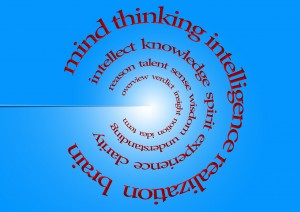Influence and Bias in Research
This post will discuss how our ideas and thoughts are influenced by the world around us and specifically, how various aspects of our environments influence information thus, our overall knowledge. We will offer a few examples of how our environments specifically influence our shared research knowledge. We’ll end this post by introducing the concept of bias and a brief discussion about ethical and principled research.
In the post, SNJ Associates: Who Are We & Why Are We Here, we examined the importance of being a critical consumer of research information. As we continue to examine ways in which our research knowledge is influenced, we’ll continue to highlight particular items to think about as you improve your critical consumer skills in assessing the reliability and validity of the research information. This post will get us all thinking about: i) Who decides what research receives funding? ii) What topics are the focus of research? and iii) How are results of research studies shared?
What Influences Our Knowledge?
Our research knowledge is composed of millions of ideas and thoughts put into action through various research activities across a vast number of topics and is influenced by many sources (and always remember at SNJ Associates we are focused on health and well-being research).
Our larger world or macro-environment continuously influences our ideas, thoughts and activities through information from news and social media outlets, entertainment sectors, political arenas, various corporate messaging, educational institutions and community organizations. Similarly, our individual or micro-environment influence our ideas and thoughts through our individual experiences and direct communication with individuals, who share our day-to-day reality. We live in our macro and micro worlds simultaneously, each day collecting a myriad of information, which influences the knowledge all around us.
Additionally, we are dynamic and ever-evolving beings from infancy to older adult. The same influence, for example, a news piece on a popular corporate media news website may produce very different thoughts and ideas in any one of us depending on where we are on our own personal development or life course phase of our life. For example, a young adolescent would surely have different ideas and thoughts regarding a news media message concerning a health topic when compared to an older adult exposed to the very same message.
It is important to acknowledge how our own personal characteristics beyond age, such as our gender, native language, where we were born or currently live all shape our ideas and thoughts thus, contribute to what we think and ‘know’ about our world. In summary, our environments influence our ideas and thoughts over the course of our lives thus, impact our knowledge of the world around us.
As our environments impact our overall knowledge, our research information or research knowledge is also influenced in the very same way. Issues such as what specific research topics are endorsed, funded and supported along with organizing and sharing results of research studies are all influenced by the same macro and micro-level institutions and individuals.
For any number of reasons and motivations governments endorse particular research initiatives, media key messaging focuses on certain health and well-being topics and corporations, along with individuals choose to donate and support specific research activities, projects and causes. A key component of examining and critiquing the research information available to us involves considering where and how particular influences impact our shared research knowledge.
Research Ethics and Principles
A number of moral and ethical principles guide research across the globe and are in place to address the reality of so many different influences within all our research information. Research activities that involve human subjects follow rigorous frameworks in order to protect the health, well-being and information of those individuals, who participate in research studies. Furthermore, institutions, researchers and countless other parties involved in research, must adhere to strict disclosure and reporting guidelines. Research activity protocols and processes are specifically designed to account for a number of influences and discourage along with reducing those influences that may introduce bias into our research knowledge.
Bias
Bias is defined as “inclination or prejudice for or against one person or group” (1) and important to research, specifically in statistical analysis bias is referred to as “a systematic distortion of a statistical result due to a factor not allowed for in its deviation”(2).
Now that is a mouthful!
The important piece to understand is that when bias is introduced into research studies, bias can ‘contaminate’ the results in such a way that the bias can affect or call into question the reliability and validity of the research information at hand. It is vital that the influence from our environments in research activities does not introduce bias or formidable elements into our shared research information that distorts any true outcomes in our research.
An inherent amount of bias is inevitable and at the very least when the introduction of bias is unavoidable it must be declared. Various guidelines, rules and ethical components are designed to reduce bias in research as much as possible. Additionally, scientific research using systematic processes also contributes to reducing the likelihood of bias in our research knowledge. [See What is Research? and Parts of the Scientific Method]
When you are reviewing any health information, always consider where the information comes from, who is likely to benefit, how rigorous with the process used to arrive at the ‘evidence’ and is it possible there is more to the story. As we progress in the blog at SNJ we will continue to add other important questions and markers for our critical review.
References
1, 2. “Bias.” Oxford Dictionaries Language Matters. Oxford University Press. Web. 5 Jan. 2016.

